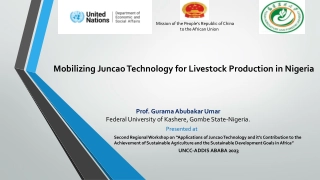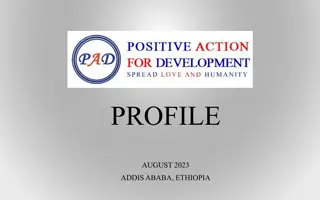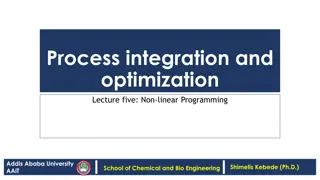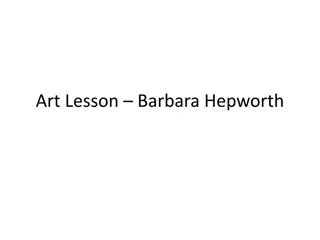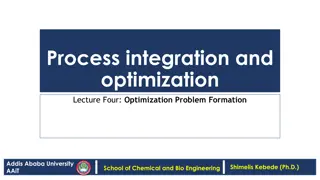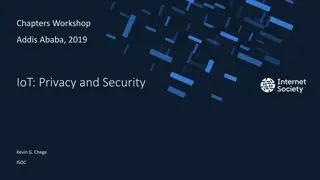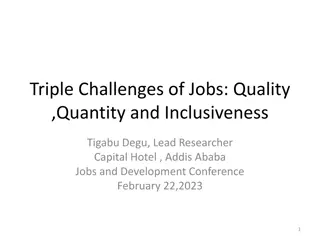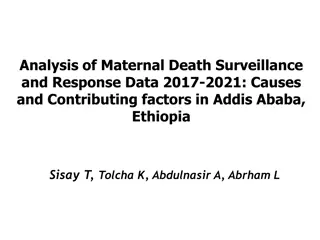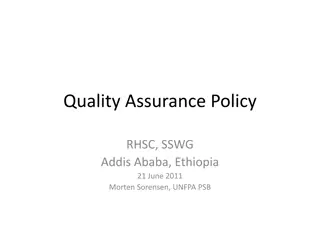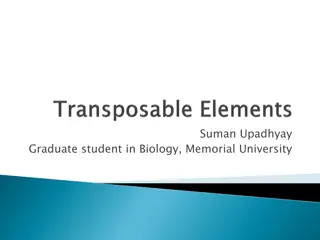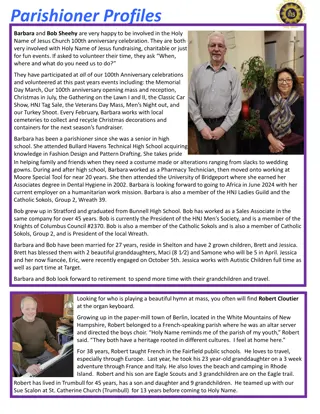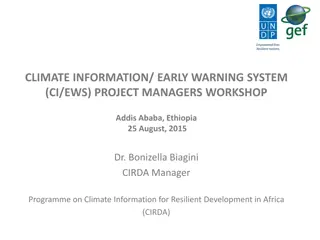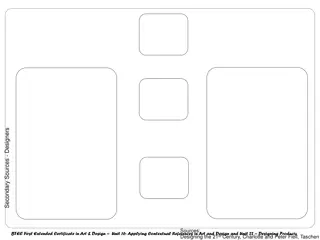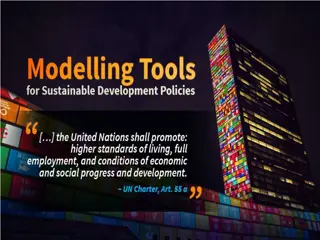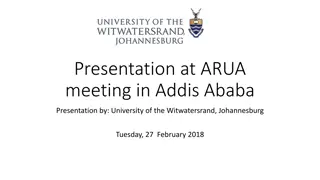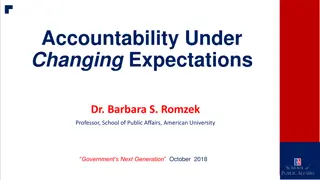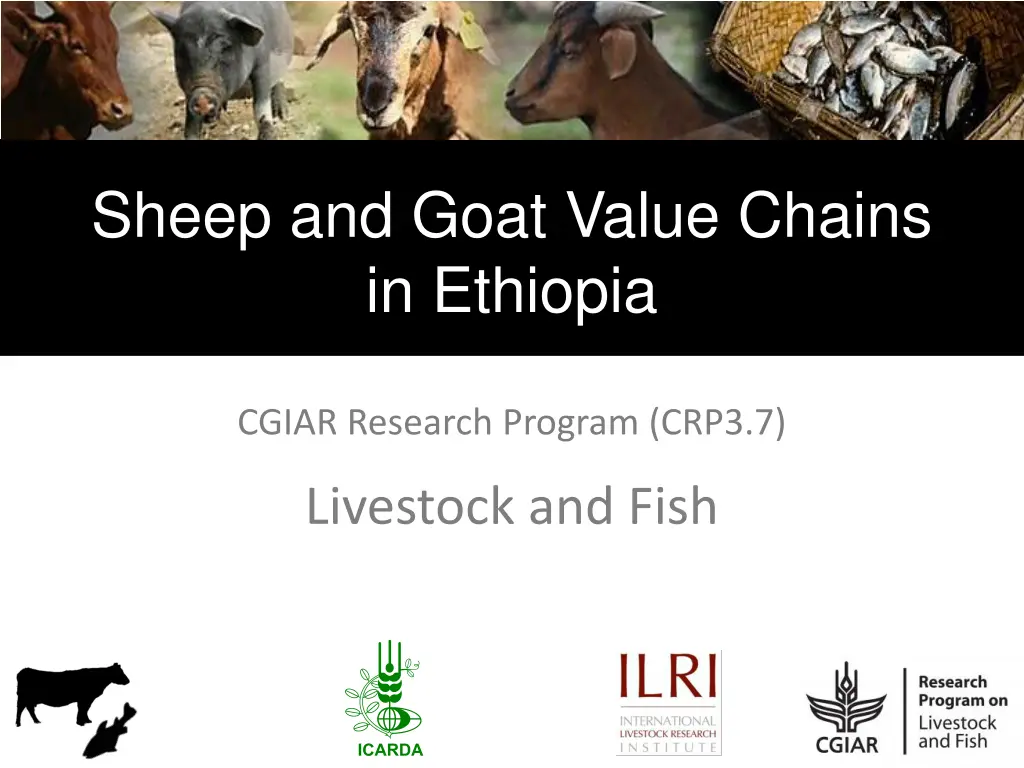
Enhancing Value Chains in Ethiopian Livestock and Fish Programs
Explore how the Livestock and Fish Program in Ethiopia aims to increase productivity, availability, and affordability of animal-source foods for poor consumers, with a focus on sustainable development and poverty reduction through long-term engagement and solution-driven research for selected value chains.
Uploaded on | 1 Views
Download Presentation

Please find below an Image/Link to download the presentation.
The content on the website is provided AS IS for your information and personal use only. It may not be sold, licensed, or shared on other websites without obtaining consent from the author. If you encounter any issues during the download, it is possible that the publisher has removed the file from their server.
You are allowed to download the files provided on this website for personal or commercial use, subject to the condition that they are used lawfully. All files are the property of their respective owners.
The content on the website is provided AS IS for your information and personal use only. It may not be sold, licensed, or shared on other websites without obtaining consent from the author.
E N D
Presentation Transcript
Sheep and Goat Value Chains in Ethiopia CGIAR Research Program (CRP3.7) Livestock and Fish
Goal of the Livestock and Fish Program: More milk, meat and fish by and for the poor To sustainably increase the productivity of small-scale livestock and fish systems, increase the availability and affordability of animal-source foods for poor consumers, and reduce poverty through greater participation by the poor along the whole value chains for animal-source foods.
The approach: Solution-driven R4D to achieve impact and a long-term engagement R4D integrated to transform selected value chains for selected commodities in selected countries Production Processing Marketing Consumers Inputs & Services Value chain development team and research partners This program will be a long-term engagement (at least 6 years) in Ethiopia at the selected sites provided we can make it work!
Next steps (presented 5 Nov 2012 in Addis) Training of partners on toolkit for Rapid Value Chain Assessment (VCA) 5-8 November in Addis 20-23 November in Awassa Start of field implementation of rapid VCA end Nov. 2012 Report writing in January 2013 Wrap-up meetings in February 2013 to discuss results and to identify best-bet interventions and needs for in-depth VCA Initiation of best-bet interventions end Feb/begin March Conduct baseline study end February 2013
Next steps (updated) Training of partners on toolkit for Rapid Value Chain Assessment (VCA) 5-8 November in Addis 20-23 November in Awassa Start of field implementation of rapid VCA end Nov. 2012 Report writing in January/February 2013 Writeshop to complete VCA reports 25-27 February 2013 3 Site specific stakeholder meetings in March/April 2013 to discuss VCA results and to identify best-bet interventions Initiation of best-bet interventions in April 2013 Conduct baseline study/in-depth VCA in May 2013?
Our writeshop (25-27 Feb 2013) Objectives: To complete/improve the analysis of value chains based on the checklist information To complete/improve the description of the value chain actors active at the sites To discuss and finalize the main bottlenecks in VC performance To identify the most important topics for in-depth VCA Expected Outputs: Draft VCA reports for six sites Presentations of main results for the multi-stakeholder meetings List of value chain actors to be invited to the stakeholder meetings
Purpose of the VCA reports Not just another report to be put on the shelf instead they will provide the base and crucial information for identifying and involving value chain actors at the sites 3 stakeholder meetings to negotiate and plan a first set of best bet interventions o 14-15 March in Addis (Horro, Menz, Doyogana) o 19-20 March in Mekelle (Atsbi, Abergelle, Sekoto) o 2-3 April in Debre Zeit (Shinelle and Borana) planning in-depth VCA assessment
Process today afternoon and tomorrow Resource persons : Getachew Legesse: VC mapping and marketing Solomon Gizaw: Input services Jane Wamatu: Feeding Aynalem Haile: Breeding Halima Hassen: Husbandry Barbara Rischkowsky: Animal Health and services Roles: Analysed the gaps in the 4 available reports for their respective topic Provide a general feed back this morning as background Advise and discuss with each site group on completing the VCA reports Support the preparation of powerpoint presentation

